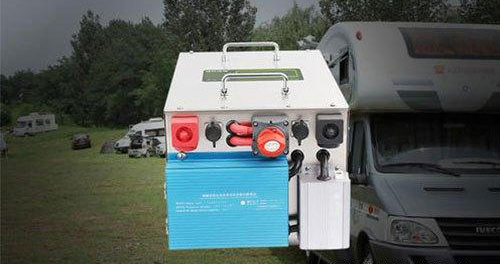Comprehensive Guide to RV Battery Charging: Methods and Tips

How do you charge RV batteries? It sounds simple, but it’s more complex than it appears. There are two main types of batteries in an RV: the starter battery, which starts the RV but does not power other equipment, and the energy storage battery, which supplies all the electricity for the RV’s devices. During regular use, both types of batteries will gradually lose their charge. To avoid running out of power, it’s crucial to understand the different methods of charging RV batteries.
There are four main methods to charge RV batteries: solar charging, shore power charging, fuel generator charging, and driving generator charging. While these are the most common, there are other methods as well.
Solar Charging
This is one of the most popular and eco-friendly ways to charge RV batteries. Many RV owners install complete solar systems on their vehicles. The benefits of solar charging include:
- Environmental Friendliness: Solar energy is clean and contributes to environmental protection.
- Convenience: As long as there is sunlight, you can charge the energy storage battery.
- Battery Protection: Solar charging can protect the battery and reduce wear and tear.
- Quiet Operation: Solar charging is noise-free, ensuring a peaceful environment.
However, solar charging has its drawbacks. The amount of power generated depends on the efficiency and size of the solar panels, which can be limited by the RV’s roof space. Additionally, solar panels cannot generate electricity on cloudy days or at night. A suitable solar system for an RV can also be costly and may not be cost-effective if the RV is not used frequently.
Shore Power Charging
Shore power charging is a traditional and straightforward method. It’s as simple as plugging in your RV to an electrical outlet, much like charging a mobile phone. The main advantage is its simplicity and lack of restrictions—if there’s a socket, you can charge. However, shore power can be a luxury during travel, as you can’t always find campsites or charging stations, especially in remote areas.
Fuel Generator Charging
Using a fuel generator is another effective way to charge RV batteries. It’s similar to refueling a car; as long as you have fuel, you can generate electricity anytime. However, this method has significant downsides, including the cost of fuel, the added weight of carrying fuel, environmental pollution, noise, and odors. This method doesn’t align well with a green lifestyle and can negatively impact your travel experience.
Driving Generator Charging
This common method involves using a DC charger, also known as an alternator, to convert the kinetic energy from driving into electrical energy to charge the batteries. The main advantage is convenience—your batteries charge as you drive. However, the power generated may not be sufficient for all your RV needs and cannot be generated when the RV is parked. Additionally, the power output depends on driving conditions, making it more suitable for supplementary charging.
Conclusion
No single method of RV battery charging is perfect. Often, a combination of methods is the best approach. For instance, you can use solar charging in conjunction with driving generator charging to ensure your RV always has sufficient power. Effective planning and smart electricity usage based on your specific situation will help you enjoy your travels without worrying about running out of power.



